Sanwa DCL31DR Handleiding
Sanwa
Meetapparatuur
DCL31DR
Bekijk gratis de handleiding van Sanwa DCL31DR (3 pagina’s), behorend tot de categorie Meetapparatuur. Deze gids werd als nuttig beoordeeld door 55 mensen en kreeg gemiddeld 3.8 sterren uit 28 reviews. Heb je een vraag over Sanwa DCL31DR of wil je andere gebruikers van dit product iets vragen? Stel een vraag
Pagina 1/3

DCL31DR
01-1507 2040 6011
DIGITAL CLAMP METER
INSTRUCTION MANUAL
Dempa Bldg., 4-4 Sotokanda 2-Chome
Chiyoda-ku, Tokyo, Japan
This manual emplys soy ink.
[1] SAFETY PRECAUTIONS
Before use, read the following safety precautions
This instruction manual explains how to safely use your new DCL31DR digital
clamp meter. Before use, please read this manual thoroughly. After reading it,
keep it together with the product so you can refer to it when necessary. If this
product is not used as specified in this manual, its protection function may be
compromised.
To avoid accidental burns or electric shock, always follow any instructions with
“ WARNING” or “ CAUTION” headings.
1-1 Explanation of Warning Symbols
The meanings of the symbols used in this manual and on the product are
explained below.
: Very important instructions for safe use.
•Warning messages are intended to prevent accidents to operating
personnel such as burn and electric shock.
•Caution messages are intended to prevent damage to the instrument.
The meanings of the symbols used exclusively on the product are explained below.
: Symbol requesting reference to the instruction manual before use
: Potential of connection to a power line in live status
: Double in sulation or reinforced insulation
: Power switch : Backlight
1-2 Warning Instructions for Safe Use
To avoid physical injury such as burns or electric shock, be sure to
observe the following instructions when using this instrument.
1. This instrument is a digital clamp meter for low voltages. It should be
used on power lines with a voltage to ground of 300 Vrms or less.
2. Pay special attention when measuring voltages of AC 33 Vrms (46.7 V
peak) or DC 70 V or more to avoid injury. Also use insulating protective
equipment as required.
3. Never use the instrument on power lines that exceed the maximum
rated input current (see 1-3).
4. Do not use the instrument if the main unit is damaged or broken.
5. Do not use the instrument with the case or battery compartment cover
removed.
6. Do not hold the measurement clip at any point beyond the barrier.
7.
Before performing measurement, make sure that the function is properly set.
8. Do not use the instrument when it or your hand is wet.
9. Do not attempt to repair or modify the instrument except to replace the
batteries.
1
0
.
Be sure to check the instrument before each use and inspect it at least
once a year.
11. Always use the instrument indoors.
12
.
To avoid compromising the protection function of this instrument, do
not use it in any way other than instructed in this manual.
*
Voltage to ground of 300 Vrms or less: When the Y-connection voltage is 415 V,
the voltage to ground is equal to 415 / 3
≒
240 V.
1-3 Overload Protection Input Values
Input Max. rated input current Max. overload protection input
Clamp sensor
AC AC/DC 420 A /DC 450 A
[2] APPLICATIONS AND FEATURES
2-1 Applications
This instrument is an AC/DC clamp meter with RMS response that allows you
to measure the current range specified in IEC 61010-1 CAT. III 300 V. It is
suitable for measuring the current of low-voltage power lines and electrical
appliances, etc.
WARNING
2-2 Features
• Safety design that complies with IEC61010-1 CAT. III 300 V
• Compact pocket size
• AC/DC compatible clamp meter
• DC+AC (True RMS) function
• Auto power OFF (approx. 15 min.) (Disabling also possible)
• Backlight
Measurement Category (Overvoltage Category)
Equipment of CAT II :
Primary cable runs of power-consuming equipment from a wall socket.
Equipment of CAT III :
Primary cable runs of equipment directly connected to a distribution board
and cable runs from a distribution board to wall sockets.
Equipment of CAT IV :
Cable runs from an incoming line to a distribution board.
[3]
NAME OF COMPONENT UNITS
3-1 Main unit
3-2 Display
[4]
DESCRIPTION OF FUNCTIONS
4-1 Power button: button
Press the button to switch the power ON and OFF.
4-2 Auto power OFF function
The instrument incorporates the auto power OFF function that turns the
instrument OFF in about 15 minutes after the last operation. This function can
be disabled by switching the instrument ON while holding the button. The
indicator on the display panel is extinguished when the auto power OFF
functions is disabled.
4-3 Low battery indication
The indicator lights on the display when the batteries have discharged
down to a supply voltage of about 2.3 V or less. Replace the batteries when
this indicator lights up.
4-4 Data hold: HOLD/PEAK button
Press the button shortly. The
indicator lights on the display and
the value displayed at that time is held and will not change even if the
measurement data varies. Pressing the button shortly again extinguishes the
indicator and the measurement data is no longer held.
* The held data is cleared when the function is switched by pressing the
SELECT button.
4-5 Function switching: SELECT button
Each press of this button switches the measurement function in sequence of
AC DC DC AC AC → → → …→
4-6 Zero setting: ZERO button
When the ZERO button is pressed while the function is DC or DC+AC
selected, the indicator lights on the display and the current input value is
displayed as zero. Pressing the ZERO button again cancels the zero setting.
* This button is disabled while the AC function is selected.
4-7 Backlight function button:
Press this button to light the backlight of the display. Pressing the button again
extinguishes the backlight. The backlight is also extinguished automatically in
about 10 seconds after it is lit.
4-8 Peak hold: HOLD/PEAK button
When the button is held depressed (for more than 1 sec.) during the HOLD/PEAK
voltage or current measurement, the indicator lights on the display and the PEAK
Peak Hold mode fixed at the 400.0 A range is started. Holding the button
depressed again cancels the Peak Hold mode. In the Peak Hold mode, the peak
value of input waveform is held at intervals of 1 msec. The held value is updated
whenever a higher value is input but not updated at lower values. For instance,
when the input is a 100 A sine wave AC, the peak value is about 141 A ( 2 times
the rated value).
• Almost the same values are displayed with both the AC and DC functions.
• Peak Hold does not work with the negative (-) input with both the AC and DC
functions.
• When the HOLD/PEAK button is pressed in the Peak Hold mode, the and PEAK
indicators light and the value displayed at that moment is held. Even
when the displayed value is held, the peak value continues to be updated
internally so, when the HOLD/PEAK
button is pressed again to release the held
value, the latest updated peak value is displayed.
• The Peak Hold mode is canceled when the function switch is switched.
Examples of peak hold measurement:
* The peak value of the negative (-) current is not held.
DC current peak
AC current peak
Measurement impossible
Measurement impossible
Measurement possible
Measurement possible
DC+AC current peak
Measurement impossible
Measurement impossible
Measurement possible
4-9 AC Detection method
This meter employs the root-mean-square value method and indicates the
magnitude of AC as the same amount of work as DC. Root-mean-square
values of sinusoidal waves and such non-sinusoidal waves as square waves
and chopping waves can be measured by the true RMS (Root Mean Square)
circuit. (The input signal measurement value is used as the scale of the actual
input signal power. It is therefore measured as a more effective value than the
value obtained by average detection.)
4-10 Crest factor
The CF (crest factor) indicates the peak value of a signal by dividing it by its
root-mean-square value. With most common waveforms such as sinusoidal
wave and chopping wave, the crest factor is low. With low duty cycle pulse
waveforms, the crest factor is high. For the voltages and crest factors for
typical waveforms, see the table below.
Input Waveform
0 to PEAK
Vrms
Average
Value Crest
Factor Form
Factor
Root Mean
Square Value
Vavg
Vp/Vrms
Vrms/Vavg
Sinusoidal
wave
Square
wave
Chopping
wave
Pulse
=1.414 =1.111
Vp
Vp
Vp
1
0
0
p p
Vp
Vp
0
Vp
-
Vp
2
√
=0.707 Vp
-
2 Vp
π
=0.637 Vp
2
√
Vp
-
2
√
2
π
2π
π
π
Vp Vp 1
π
2π
2π
-
Vp
3
√
=0.577 Vp
-
Vp
2
=0.5 Vp
-
2
3
√
=1.155
3
√
=1.732
2π
τ
0
Vp
-
τ
2π
・
Vp
-
τ
2π
・
Vp
-
2π
τ
-
2π
τ
Vp
Voltages of Various Waveforms
[5] MEASURING PROCEDURE
1. Do not apply an input voltage exceeding the maximum rated current.
2. During measurement, do not hold the measurement clip at any point
beyond the barrier.
5-1 Start-up inspection
Perform the following pre-operational check for safety.
•
Check the external appearance. Check that the main unit is free of abnormality
or damage due to dropping, etc.
•
Check that the test leads are free of irregularity such as wire disconnection or
crack.
•
Check that the indicator is not lit. If it is lit, replace the batteries with new ones.
• Make sure your hands and the instrument are not wet.
*If nothing is displayed on the LCD, the batteries might have been totally discharged.
5-2 Current measurements
1. To improve the measuring accuracy, position the conductor at the center
of the clamp sensor.
2. Always clamp only one wire at a time. Accurate measurement is impossible
if two or more wires, a cable with multiple conductors or a parallel cord is
clamped.
3. Accurate measurement is impossible if the clamp sensor is not closed
completely.
4. Accurate measurement is sometimes impossible near a source of strong
magnetic field such as a transformer or high-current line, near a source of
electromagnetic waves such as radio equipment or near a charged object.
5. The CT may generate an oscillating sound when a high current is applied.
This is not malfunction.
6. During measurement with the DC current (DCA) function, the reading may
vary by a few counts when the orientation (effect of the terrestrial magnetism)
or the ambient temperature of this instrument is changed significantly.
* Perform measurements using the clamp sensor. Each press of the button
switches the measurement function in sequence of AC → DC DC AC → →
AC →…
→
→
→
Clamping single conductor on the center of clamp sensor.
Clamping multiple conductors. Force applied to the tip of
clamp sensor.
Correct
○
Incorrect
×
Load
Load
WARNING
CAUTION
Clamping current sensor
(CT)
Center position indication
Polarity
indicators
Barrier
HOLD/PEAK button
ZERO button
SELECT button
Data HOLD
Auto power OFF enabled
DC (Direct current)
Zero setting indicator
Polarity (-)
Trigger
Power button
Backlight button
LCD
PEAK measurement
mode
Low battery indication
Unit (ampere)
Numeric value & decimal point
AC (Alternate current)
− 2 − − 4 −− 1 − − 3 −

5-2-1 Measuring the AC current (ACA measurement)
Function Input Ranges
AC 0.01 ~ 400.0 60.00/400.0 A
* The accuracy-guaranteed frequencies of this measurement are from 40 to
400 Hz.
①Press the button so that lights.SELECT AC
②Open the clamp sensor, position the wire to be measured and close the
clamp sensor completely.
③Read the displayed value.
5-2-2 Measuring the DC current (DCA measurement)
Function Input Ranges
DC ± 0.01 400.0 60.00/400.0 A~
①
Press the button so that lights.SELECT DC
②Wait until the display stabilizes, then press the ZERO button to perform the
zero adjustment. ( lights on the LCD display.)
③ Open the clamp sensor, position the wire to be measured and close the clamp
sensor completely.
④ Read the displayed value
* Align the orientation of the arrow on the side of the clamp sensor with the
orientation of the measured current. If they are not aligned, the displayed
polarity becomes – (negative).
5-2-3 Measuring the DC + AC current (DCA+ACA measurement)
This function measures the RMS value of a total-wave/half-wave rectified waveform
or a DC wave on which AC wave is superimposed.
Function Input Ranges
DC AC 0.1 ~ 400.0 400.0 A
①
Press the button so that both and light.SELECT DC AC
②
Wait until the display stabilizes, then press the button to perform the zero ZERO
adjustment. (
lights on the LCD display.)
③
Open the clamp sensor, position the wire to be measured and close the clamp
sensor completely.
④
Read the displayed value.
* DCA+ACA is internally calculated as (DC)
2
+ (AC)
2
. The polarity of the DC
component is not displayed.
* Note the input frequencies and the crest factor.
Remark:
In general, AC measurements use AC coupling.
If an AC signal includes DC offset, only the AC component is measured by
cutting the DC component.
A waveform having the amplitude on only one side, such as the full-wave
rectified wave, is regarded as an AC waveform with which the 0 position is
moved to the midpoint in terms of area.
DC+AC
Waveform measured
with AC coupling
Full-wave rectied
waveform
[6] MAINTENANCE
1. This section is very important for safety. Read and understand the following
instructions fully and maintain your instrument properly.
2. To maintain safety and accuracy, calibrate and inspect the instrument at
least every year.
6-1 Maintenance and Inspection
Before use, check the instrument to confirm that there is no abnormality and that
the CT can be opened and close smoothly. If anything is abnormal, do not use the
instrument and return it to your authorized Sanwa agent or distributor for repair.
6-2 Calibration
For more information, please contact Sanwa’s authorized agent / distribute
service provider, listed in our website.
See section 7-3.
6-3 Cleaning and Storage
1. The panel and case are not resistant to volatile solvent and must not be
cleaned with thinner or alcohol. If the instrument gets dirty, wipe with a soft
cloth moistened with a small amount of water.
2. The panel and case are not resistant to heat. Do not place the instrument
near heat-generating devices (such as a soldering iron).
3. Do not store the instrument anywhere it may be subject to vibrations or
could fall.
4. When storing the instrument, avoid hot, cold or humid locations, locations
exposed to direct sunlight, or locations where condensation is anticipated.
5. When the instrument is not going to be used for an extended time, be
sure to remove the batteries.
6-4 Battery replacement
• Batteries shipped with the instrument
The batteries loaded at the factory are monitor batteries, so their service life
may be shorter than that of brand-new batteries. Monitor batteries are a type
of battery used to check the functions and performance of a product.
1. To avoid electric shock, do not remove the battery compartment cover
while an input is applied to the clamp sensor or the instrument is
measuring something.
2. Make sure that this instrument is set to OFF before proceeding to the
battery replacement.
[7] AFTER-SALE SERVICE
7-1 Warranty and provision
Sanwa offers comprehensive warranty services to its end-users and to its
product resellers. Under Sanwa's general warranty policy, each instrument is
warranted to be free from defects in workmanship or material under normal use
for the period of one (1) year from the date of purchase.
This warranty policy is valid within the country of purchase only, and applied
only to the product purchased from Sanwa authorized agent or distributor.
Sanwa reserves the right to inspect all warranty claims to determine the extent
to which the warranty policy shall apply. This warranty shall not apply to
disposables batteries, or any product or parts, which have been subject to one
of the following causes:
1. A failure due to improper handling or use that deviates from the instruction manual.
2. A failure due to inadequate repair or modification by people other than Sanwa
service personnel.
3. A failure due to causes not attributable to this product such as fire, flood and
other natural disaster.
4. Non-operation due to a discharged battery.
5. A failure or damage due to transportation, relocation or dropping after the
purchase.
7-2 Repair
Customers are asked to provide the following information when requesting
services:
1. Customer name, address, and contact information
2. Description of the problem
3. Description of the product configuration
4. Model Number
5. Product Serial Number
6. Proof of Date-of-Purchase
7. Where you purchased the product
Please contact Sanwa authorized agent / distributor / service provider, listed
in our website, in your country with above information. An instrument sent to
Sanwa / agent / distributor without above information will be returned to the
customer.
Note:
1) Prior to requesting repair, please check the following:
Capacity of the built-in battery, polarity of installation and discontinuity of the
test leads.
2) Repair during the warranty period:
The failed instrument will be repaired in accordance with the conditions
stipulated in 7-1 Warranty and provision.
3) Repair after the warranty period has expired:
•
If it is expected that servicing can restore the original functioning of the
product
,
we will service it for a price upon request of the user.
•
The service charge or transport freight could sometimes become higher than the
product price. Please consult us before asking for servicing.
• The minimum retention period of the servicing performance parts of this
product is six (6) years after the discontinuation of production. This period is
equal to the servicing available period. However, the retention period of a part
may be reduced if it becomes unavailable due to discontinuation of production
of the part manufacturer, etc.
4) Precautions when sending the product to be repaired:
To ensure the safety of the product during transportation, place the product in
a box that is larger than the product 5 times or more in volume and fill cushion
materials fully and then clearly mark “Repair Product Enclosed” on the box
surface. The cost of sending and returning the product shall be borne by the
customer.
7-3 SANWA web site
http://www.sanwa-meter.co.jp
E-mail: exp_sales@sanwa-meter.co.jp
[8] SPECIFICATIONS
8-1 General specifications
Operation method
Δ- Σ method
AC detection method
True RMS method (AC coupling)
Display 6000 count
Sampling rate Approx. 2 times / sec. Approx. 1 time/sec. with
DC+AC function
Overload display “OL” on the numeric display
Range selection Auto range
Low battery indication
When the batteries are discharged down to 2.3 V
or less, the indicator lights on the display.
Current measurement
method Clamping current sensor (CT )
aperture diameter Max. approx. dia.
φ25 mm
Operation
environment
Altitude max. 2000 m, indoor use, environmental
pollution degree II.
Operating
temperature/
humidity
Temperature 5 to 40 °C,
Relative humidity max. 80 % RH at 5-31 °C and
decreases linearly through 80 % RH to 50 % RH at
31-40 °C (without condensation)
Storage temperature/
humidity
-10 to 40°C: Max. 80 % RH (without condensation)
40 to 50°C: Max. 70 % RH (without condensation)
(Remove the internal batteries when the instrument
is not to be used for long time.)
Temperature
coefficient
At below 18 °C or above 28 °C, multiply accuracy
by x 0.15 per 1 °C
Power supply “AAA”-size alkaline battery LR03 x 2
Auto power OFF Power OFF in approx. 15 min. after last operation
Power consumption /
Battery life
Approx. 25 mA / Approx. 35 hours (backlight
extinguished)
Dimensions and mass
145 ( )H x 54 x 31 mm, approx. 120 g ( )W( )D
(including batteries)
Safety standards IEC61010-1, IEC61010-2-030 CAT. III 300 V,
IEC61010-2-32
EMC directive IEC61326-1
Accessories Instruction manual, carrying pouch (C-DCL10)
8-2 Measuring ranges and accuracies
Accuracy-guaranteed temperature/humidity range: 23 ±5 °C, max. 80 % RH
(without condensation).
rdg: Reading. dgt: digits (lowest digit)
Accuracy-guaranteed range: 1 % to 100 % of measurement range
Crest factor CF: Full-scale CF < 1.6, half scale CF < 3.2
ACA measurement RMS response, AC coupling (sine wave alternate current)
Range Resolution Accuracy: 50/60 Hz Accuracy: 45-400 Hz
60.00 A 0.01 A ±(2.0 %rdg + 5 dgt) ±(3.0 %rdg + 10 dgt)
400.0 A 0.1 A
DCA measurement
Range Resolution Accuracy
60.00 A 0.01 A ±
(2.0 %rdg + 5 dgt)
400.0 A 0.1 A
Note: Accuracy after the zero point is set by pressing the button.ZERO
DCA+ACA measurement
Range Resolution Accuracy: 50/60 Hz Accuracy: 45-400 Hz
400.0 A 0.1 A
±
(
2.5 %rdg + 10 dgt
)±
(3.5 %rdg + 15 dgt)
Note: Accuracy after the zero point is set by pressing the button. The ZERO
polarity of the DC component is not displayed. * DCA+ACA is internally
calculated as DC2 + AC2.
Peak hold
Range Resolution Accuracy
400.0 A 0.1 A ±
(3.0 %rdg + 10 dgt)
* With a waveform having a level of 4.0 A or more and width of 2 msec, or more.
Accuracy measurement method
(Example) ACA measurement
Reading: 10.00 A
Range accuracy: 60.00 A range = ±(2 %rdg + 5 dgt)
Error: ±(10.00 A x 2.0 % + 0.01 A + 5) = ±0.25 A
True value: 10.00 A ±0.25 A (in the range from 9.75 to 10.25 A)
* 3 dgt in the 60.00 A range is equivalent to 0.03 A.
* 3 dgt in the 300.00 A range is equivalent to 0.3 A.
Specifications and external appearance of the product described above
may be revised or modified without prior notice.
WARNING
CAUTION
WARNING
①
Using a Phillips screwdriver, remove the
fi xi n g sc r e w (x 1 ) f ro m th e ba tt ery
compartment cover.
② Remove the battery compartment cover.
③
Replace both of the batteries in the
b a t t e r y h o l d er w i t h n e w o n e s b y
observing the correct polarity.
④
Place the battery compartment cover
and tighten the fixing screw in the
original position.
− 5 − − 7 −− 6 − − 8 −
Product specificaties
| Merk: | Sanwa |
| Categorie: | Meetapparatuur |
| Model: | DCL31DR |
Heb je hulp nodig?
Als je hulp nodig hebt met Sanwa DCL31DR stel dan hieronder een vraag en andere gebruikers zullen je antwoorden
Handleiding Meetapparatuur Sanwa

6 Januari 2024

5 Januari 2024

5 Januari 2024

29 December 2023

29 December 2023

28 December 2023

28 December 2023

27 December 2023

27 December 2023

27 December 2023
Handleiding Meetapparatuur
- Finder
- Nedis
- Extech
- Laica
- GW Instek
- Qubino
- Amprobe
- Einhell
- Aranet
- Panasonic
- Atmel
- GlowShift
- Eurolite
- SensoProtect
- DriveTest
Nieuwste handleidingen voor Meetapparatuur
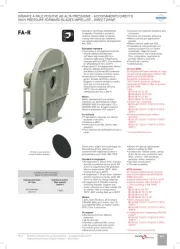
16 September 2025
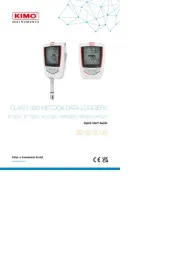
16 September 2025
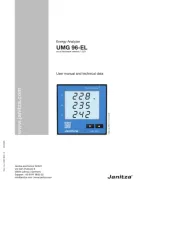
16 September 2025
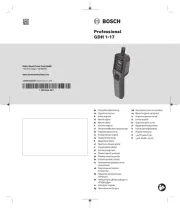
15 September 2025
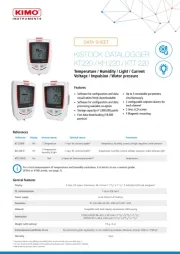
15 September 2025
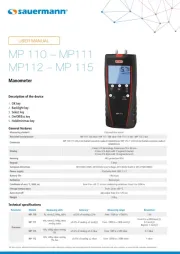
15 September 2025
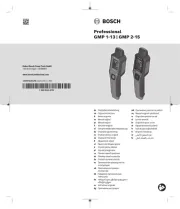
15 September 2025
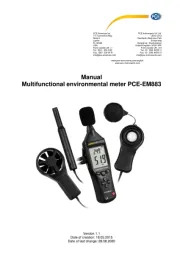
15 September 2025
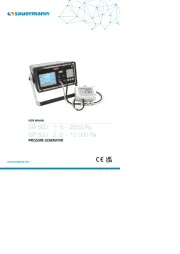
15 September 2025
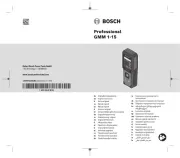
15 September 2025